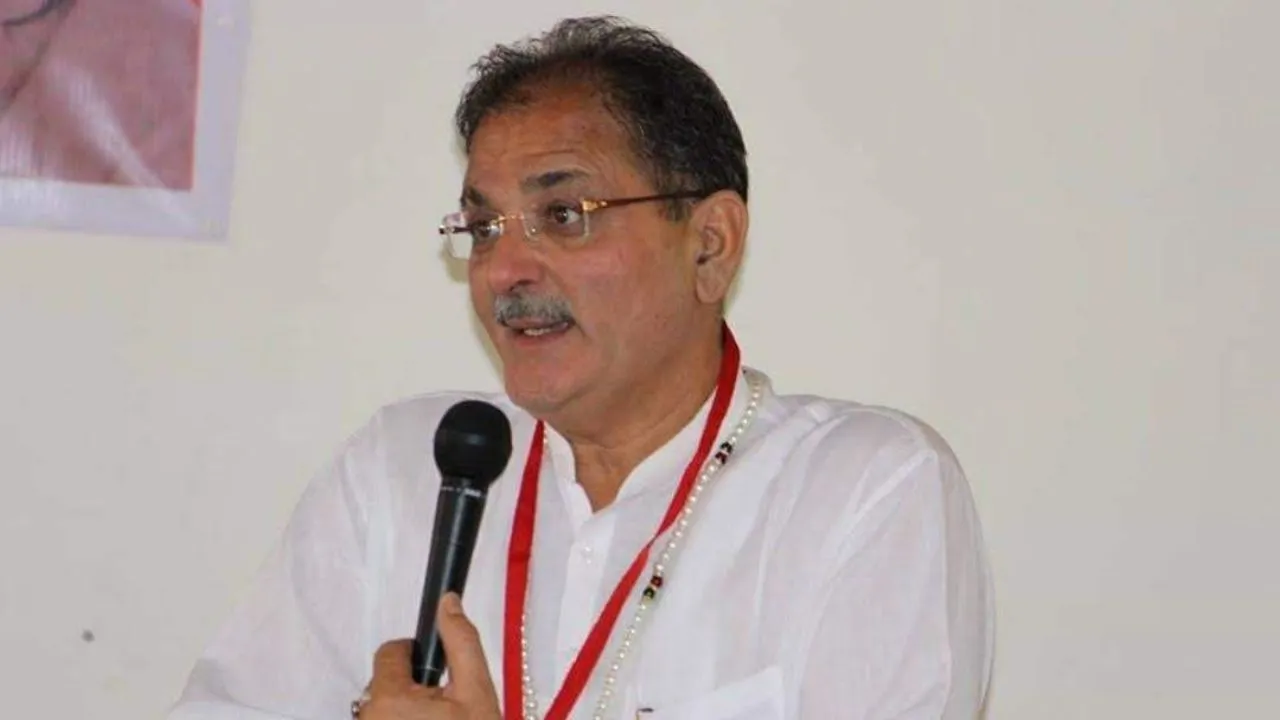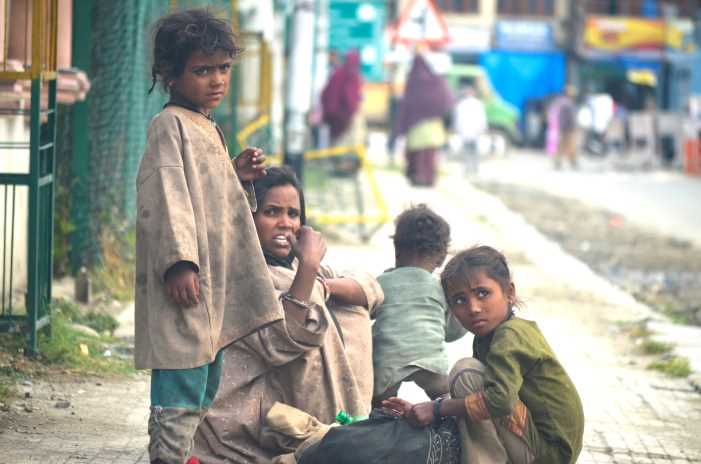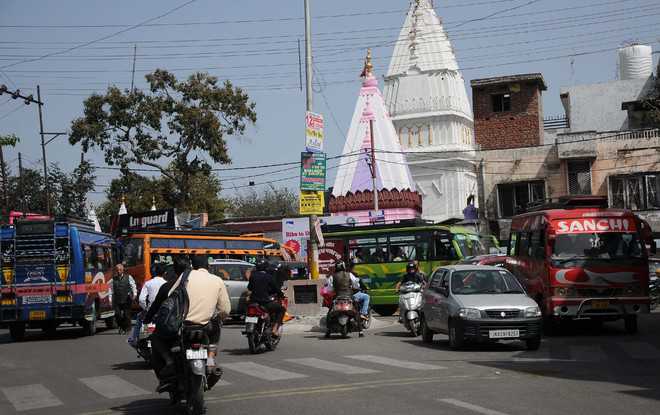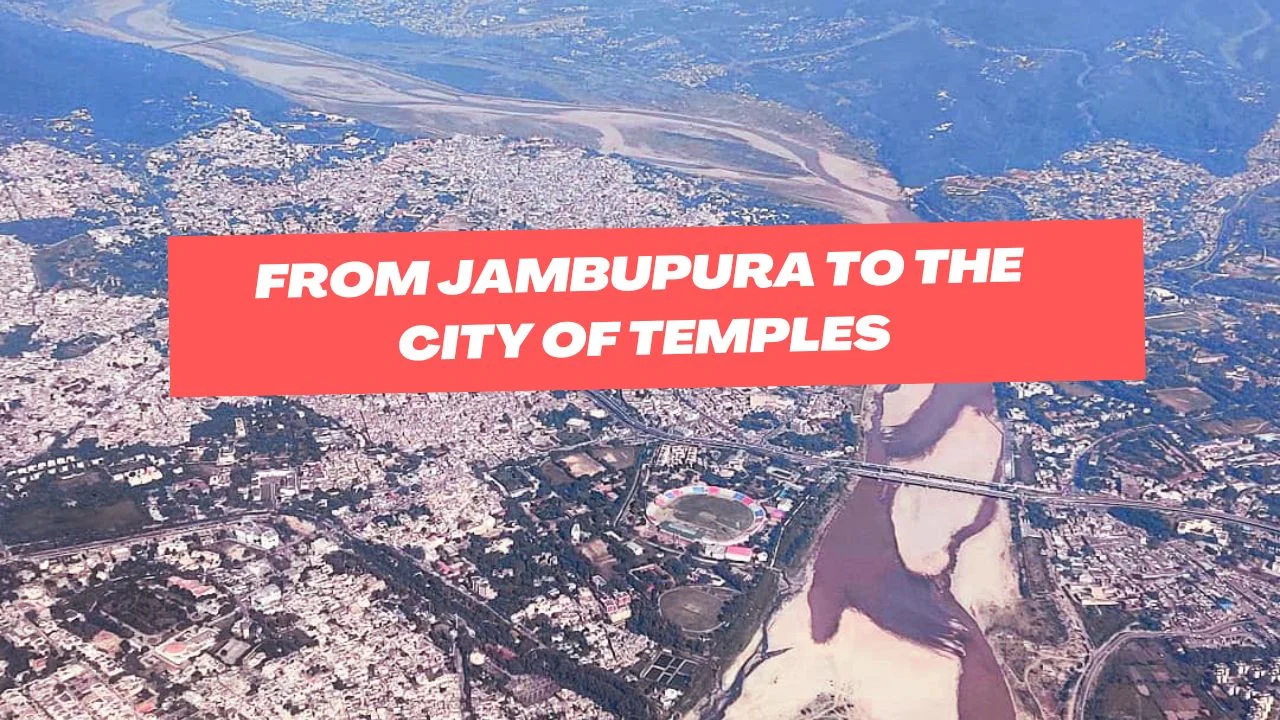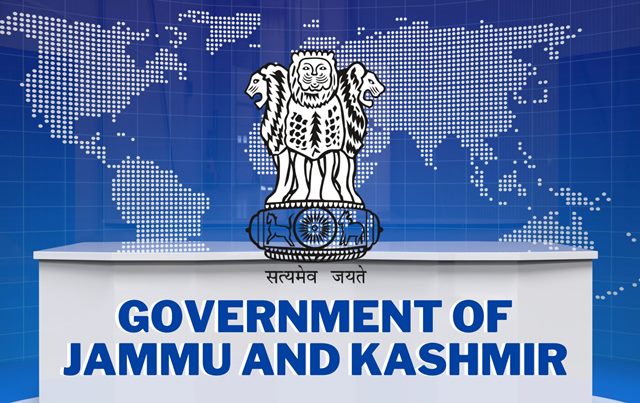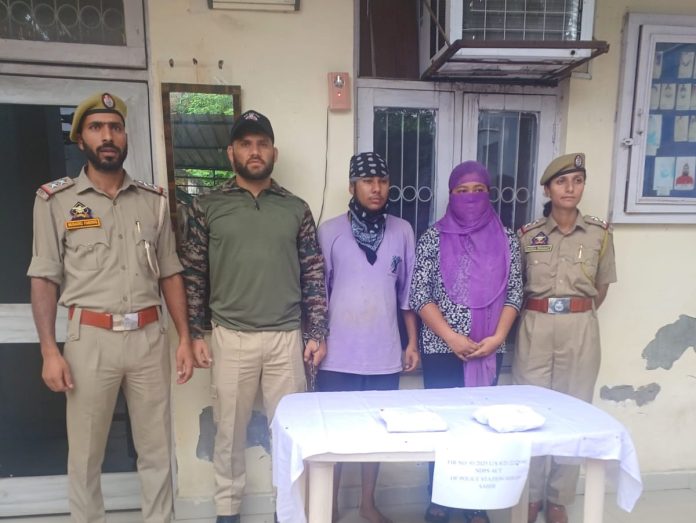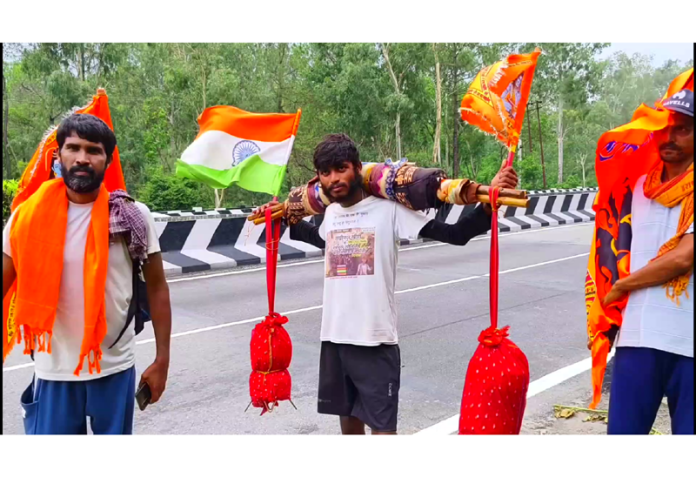Purmandal Shiv Temple, a revered pilgrimage site in Jammu, is located 40 km southeast of Jammu city, nestled along the banks of the sacred Devika River in Purmandal. This holy town, often referred to as “Small Kashi,” holds immense spiritual significance, drawing devotees from across India. The Devika River, also known as Gupt Ganga, divides the town into two parts and is considered even more sacred than the Ganges in certain Hindu scriptures.
The Sacred Devika River and Its Mythological Importance
The origins of the Devika River trace back to the last phase of the Dwapar Yuga, as mentioned in the Vana Parva of the Mahabharata. According to the Padma Purana, Lord Krishna declared that when the Ganga becomes burdened with the sins of bathers, she purifies herself by bathing in the Devika. This underscores the immense sanctity of the river for Hindus, who believe that performing religious rites along its banks grants spiritual purification and liberation of departed souls.
In the Great Epic Mahabharta Brahamrishi Pulastya told Bhishma of the merits of visiting of different pilgrimage centres in India. About the river Devika he said “it is one of the pilgrimage centres that stands accepted and celebrated all over the world especially by the Hindus. This pious place is popularly known as small Kashi as a large number of Hindus perform many rituals for the peace of departed souls. Hence in a way it is the sacred Ganga of the people of Jammu and Kashmir. Popularity of the place dates long back with its original name as Pur or Puri but to the passage of time, the Mandal an adjoining village to Pur got suffixed in its name and now the place is known as purmandal.
Lord Shiva himself mainfested as Shiv Lingum at a number of places on the banks of Devika, of which Sudhmaha Dev, Udhampur, Purmandal and Uttarbehani are well known, so a great importance was attached to bathing in its water on special sacred days, for the purpose of obtaining moral cleansing by bathing in its water. The Devika originating from Gouri Kund of Sudh Maha Dev (Man Talai) flows through Udhampur, Purmandal and Utterbehni and finally meets the Ugh river. The Devika is believed to have appeared on Phalguna or Phaguna chaudash i.e. Shivratri at the end of Dwapur Yug.
Read also: Must-Visit Lord Shiva Temples in Jammu & Kashmir
Legends Associated with Purmandal Shiv Temple
Several legends are tied to the divine significance of Purmandal. One popular legend states that Rishi Kashyapa, concerned about the moral decay of people in Kaliyuga, performed intense penance to please Lord Shiva. In response, Lord Shiva directed Goddess Parvati (Uma) to manifest as the Devika River to cleanse the sins of the people in Duggar Desh.
Another well-known mythological tale associated with this place is the origin of Lord Ganesha. When Goddess Parvati sculpted an idol and infused life into it, she commanded Ganesha to guard her while she bathed. Lord Shiva, unaware of this, tried to enter but was stopped by Ganesha. Enraged, Shiva beheaded him. When Parvati wept in grief, Shiva restored Ganesha’s life with the head of an elephant, leading to the tradition of celebrating Ganesh Chaturthi.
Purmandal Shiv Temple: A Shrine of Divine Presence
The Purmandal Shiv Temple is unique as it houses a “Svayambhu Lingam” (self-manifested Shiva Lingam). The temple’s origins are attributed to Raja Veni Dutt of Kashmir, who is believed to have ruled between 855 and 883 AD. According to folklore, his daughter, believed to be the reincarnation of a jackal that had died near the lingam, suffered from chronic headaches. Her condition was cured only after removing an arrow from the skeleton of the jackal at Purmandal, which led to the construction of the temple. A hooded stone serpent jutting out of a cistern in the rock in the central shrine is an object of religious attraction as it is believed to be the only menifestation of Lord Shiva of that kind anywhere in the country.
Another attraction of Purmandal Shiv Temple is the large numberof wall paintings done extensively on the walls of the old buildings, the theme of the painting is slightly different from other wall paintings of Jammu, because paintings of Jammu were mostly of Ramayana and Krishna theme but at Purmandal the figures of Lord Shiva, Goddess Parvati, Ganesha etc; are painted.
Renovation and Patronage by Dogra Rulers
Maharaja Gulab Singh, the founder of the Dogra dynasty, took significant steps to restore and enhance the Purmandal Shiv temple complex. He donated golden ewers to Lord Shiva and established a Sanskrit Vidyalaya on the banks of the Devika River. His successor, Maharaja Ranbir Singh (1857-1885), further contributed by constructing the Bhairav Temple, Kartikeya Temple, and Ganesh Temple within the complex. These temples remain prominent places of worship today.
Purmandal: A Center of Sanskrit Learning and Artistic Heritage
Purmandal was not just a religious hub but also a center for Sanskrit learning, attracting scholars from India and beyond. The town’s rich artistic heritage is reflected in the exquisite wall paintings that adorn its old buildings. Unlike typical Jammu paintings, which primarily depict scenes from the Ramayana and Krishna Leela, Purmandal’s murals predominantly feature Lord Shiva, Goddess Parvati, and Ganesha.
Spiritual Practices and Rituals at Purmandal
One of the most revered rituals performed here is the immersion of ashes in the Devika River, a practice usually reserved for the Ganges at Haridwar or Varanasi. This reinforces Purmandal’s stature as “Small Kashi.” Devotees believe that performing last rites here ensures the salvation of departed souls.
Read also: All Information about Ranbireshwar Temple Jammu
Pilgrimage and Cultural Influence
Over the centuries, Purmandal has attracted dignitaries from different faiths. Even Muslim rulers held the town in high esteem. The great Sikh ruler Maharaja Ranjit Singh was among its notable devotees and made generous offerings to the temple.
Purmandal Shiv Temple, with its divine significance, historical depth, and cultural heritage, remains a vital pilgrimage site for Hindus. From its association with the sacred Devika River to the architectural contributions of Dogra rulers, this spiritual town continues to be a beacon of faith and devotion. Whether seeking spiritual solace or historical exploration, Purmandal offers an enriching experience steeped in mythology, tradition, and reverence.



